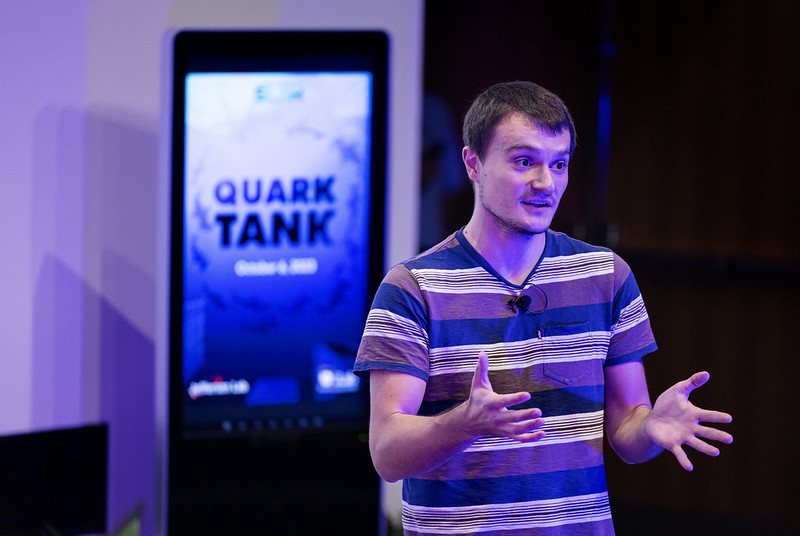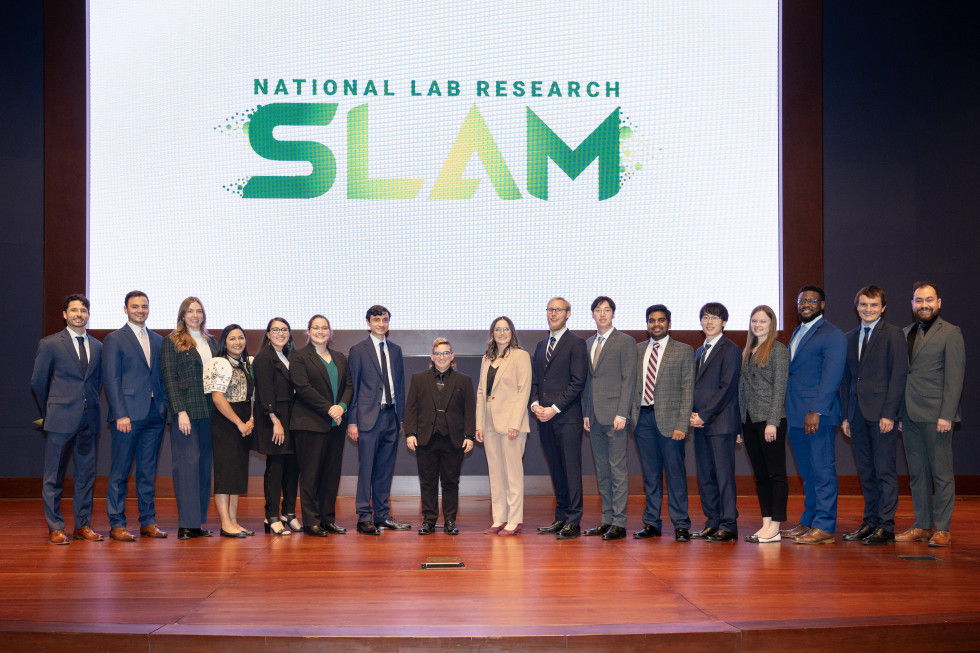Meet Pierre Chatagnon, a Jefferson Lab postdoctoral fellow and experimental physicist who took his love for nuclear physics to the national lab stage.
Jefferson Lab postdoc brings strong force to the national lab stage
NEWPORT NEWS, VA – In the exploration of physics, where the universe's intricacies unfold through complex mathematics and rigorous experiments, a young boy decided this world of intellectual challenges and practical applications would be the fun future he was looking for.
That young boy is Pierre Chatagnon, a postdoctoral fellow at the U.S. Department of Energy’s Thomas Jefferson National Accelerator Facility. The French native’s journey into experimental nuclear physics was shaped by a love of numbers and a passion for unraveling mysteries.
Navigating the intersection of theory and the real world, Chatagnon has excelled as a postdoctoral researcher in Jefferson Lab’s Hall B. Though data analysis is key to his role, Chatagnon likes to be at the center of action — where scientific breakthroughs materialize.
Hall B is one of four experimental halls housing specialized equipment for the Continuous Electron Beam Accelerator Facility (CEBAF), a unique DOE user facility used by more than 1,800 scientists worldwide. Inside CEBAF’s halls are targets and detector systems that help physicists probe the heart of matter and contribute to a broader understanding of the universe.
Here, Chatagnon explores the building blocks of the atom — beyond the protons and neutrons that make up the nucleus — to uncover the true strength of the force that binds their elementary particles. This interaction is known as the “strong force.”
Beyond the drum-shaped wall of Hall B, his passion for research led him to victory in "Quark Tank” (Jefferson Lab's qualifier for the National Lab Research SLAM). SLAM’s primary focus is to encourage effective science communication by early-career scientists and postdocs.
Participants are challenged with sharing one-slide presentations of their work in terms that are easy for nonexperts to understand — and all in three minutes or less!
"Pierre is a great young scientist. He's done a lot of remarkable research and demonstrates a commitment to communicating complex scientific concepts,” said Lisa Surles-Law, Jefferson Lab science education team lead and the lead organizer of Quark Tank. “His participation in the National Research SLAM showcased his ability to translate his research into an engaging and accessible format for the public.”
Following his Quark Tank success, Chatagnon advanced to the inaugural National Lab Research SLAM in Washington, D.C. Sponsored by Congress’s House Science and National Labs Caucus and the Senate National Labs Caucus, the contest encouraged competition and collaboration while highlighting the DOE’s 17 national labs and their federal research priorities.
“Witnessing the enthusiasm and dedication that Pierre displayed in preparing for both the regional and national SLAM competitions demonstrates the significant impact this competition has in shaping the next generation of scientific leaders and communicators,” Surles-Law said.
France A. Córdova, president of the Science Philanthropy Alliance and 14th director of the National Science Foundation, said she was “deeply impressed by the quality of the science and the profound questions these participants were asking.”
“Our national labs have made a good investment in these young people,” she said.
Chatagnon didn't leave the audience hanging, even as the seconds quickly ticked away.
Wrapping up his brief presentation, he said, “Here, you have your answer: For the first time, scientists at Jefferson Lab have extracted experimental energy pressure inside the proton, and it turns out that it's almost ten times higher than the pressure inside of a neutron star. Truly, it may suggest the strong force is very, very strong.”
Chatagnon left D.C. with valuable insights. Among them were the benefits of dedicated lessons in delivering speeches, structuring presentations, managing body language, and even mitigating stress.
“While I took the local SLAM event as a side project, the preparation for the national competition elevated me and my fellow participants to the next level,” remarked Chatagnon.
By Michelle Alvarez
Contact Michelle Alvarez, Jefferson Lab Communications Office, malvarez@jlab.org



